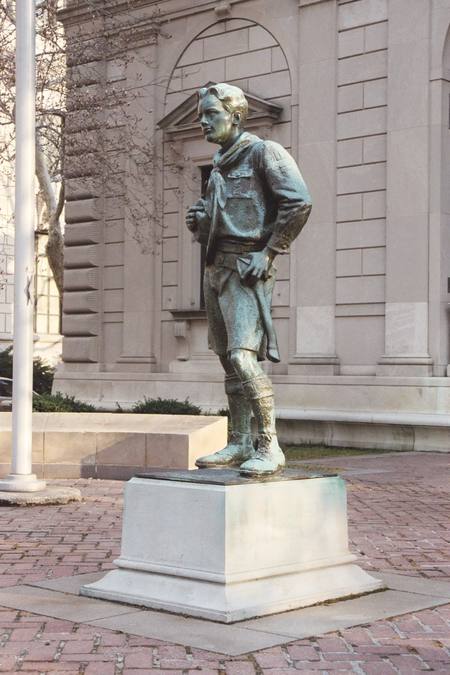The Ideal Scout
1915 sculpturesBoy Scouts of AmericaCulture of PhiladelphiaRemoved statuesScouting in art ... and 3 more
Sculpture seriesSculptures of menStatues in the United States

The Ideal Scout, also known as The Boy Scout, is the most famous work by Canadian sculptor R. Tait McKenzie (1867–1938). The original statue stood in front of the Cradle of Liberty Council at 22nd and Winter Streets in Philadelphia, Pennsylvania, from 1937 to 2013. Replicas can be found at Boy Scouts of America councils across the United States, as well as at Gilwell Park in London, England, and at Scouts Canada's national office in Ottawa. The Smithsonian American Art Museum's database lists 18 copies.
Excerpt from the Wikipedia article The Ideal Scout (License: CC BY-SA 3.0, Authors, Images).The Ideal Scout
Winter Street, Philadelphia Center City
Geographical coordinates (GPS) Address Nearby Places Show on map
Geographical coordinates (GPS)
| Latitude | Longitude |
|---|---|
| N 39.9591 ° | E -75.17525 ° |
Address
Winter Street 2130
19103 Philadelphia, Center City
Pennsylvania, United States
Open on Google Maps







